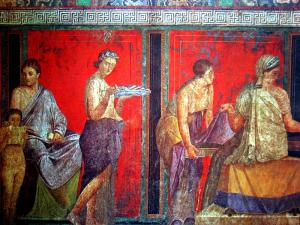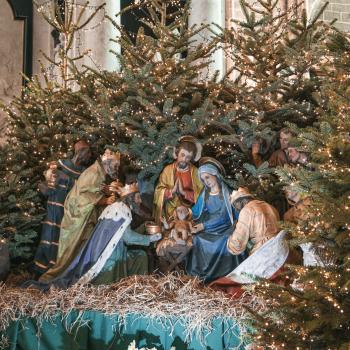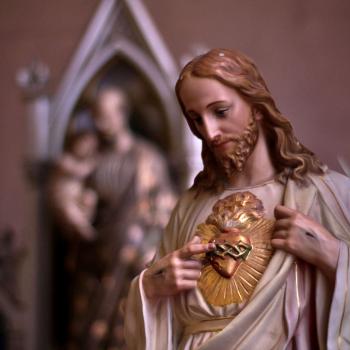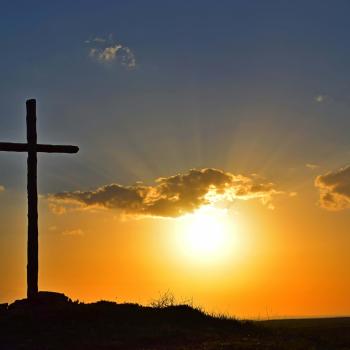
What took place in the years after the death of Jesus? Did his followers immediately begin setting up churches? What religious texts did they use? Did they share a cohesive set of beliefs about Jesus and his message? Was there one leader or many?
As it turns out, the early years of Christianity were a wee bit chaotic. Nothing resembling the church or New Testament would exist for hundreds of years. Religious “practices” varied from community to community. There was no central figure in charge. These a few of the facts that emerge from the new book After Jesus Before Christianity, A Historical Exploration of the First Two Centuries of Jesus Movements, via the Christian research group The Westar Institute.
There’s not one story but many that emerge from the early years of Christianity. Here are a few of the more interesting findings in the book, many of which may change the way you view the religion named for Jesus and how we practice it today. Exact quotes from After Jesus Before Christianity are indicated. I also reference Elaine Pagels’ book Beyond Religion.
What Happened After The Death of Jesus
There was no church or new religion. The early followers of Jesus had not yet broken away from the Jewish faith. There was “an intermingling of Jesus peoples and Israel” and “a great variety of clubs, families, movements, schools, communities and groups associated with Jesus the teacher, the Anointed, Lord and Savior.” But nothing resembling a church and no movement to form a new religion.
The early Christians were persecuted by the Romans. Their lives were “unrelentingly filled with risk, pain and death.” It wasn’t uncommon for Jesus followers to be hauled in front of a local magistrate and be asked once, twice, three times if they were Christians. If they persisted in saying yes, they were led away to execution. “Suffering and death were central to their understanding of who they were and what made their association with Jesus meaningful.”
Women played a major role in these early groups. It was common for women to serve as local leaders. In the face of constant Roman oppression, followers were taught they should not be afraid but be confident. There were many stories shared within the groups, that featured women facing sickness, death and danger, who nevertheless persevered. Their trust in themselves, and in God, was rewarded and they were seldom harmed.
Followers of Jesus enjoyed regular communal meals. They usually met in groups of 6 to 15, though sometimes larger. They would engage in “exuberant and jubilant meals,” drinking wine and engaging in spirited conversation. “Writings from these communities present Jesus as host, guest, and chief honoree of the meal.” The topics of conversation might include Jesus’s teachings, but also explored kindness, joy and compassion.
They had differing views of Jesus. Some viewed the “crucified and resurrected Jesus as the one divinity to be revered.” But others simply “respected him as a teacher and healer.” Not everyone thought he was the most important figure of their time, let alone God incarnate.
Paul is a pivotal figure—but not for everyone. Elaine Pagels explains that many of the early Christians disagreed on the core teachings and would follow different teachers. Some would say, “I belong to Peter’s group, others saying I belong to Paul’s, some to groups that others led.” Paul would go on to become the most prominent figure in the New Testament, but in those days, many questioned his legitimacy. The reason, as After Jesus Before Christianity reports, was “he had never known Jesus in the flesh.” Some believed he was “a dangerous corruptor trying to lead the faithful astray” and “many communities resisted his attempt to unify the movement under a consistent set of beliefs and practices.”
There was no official holy book. From the first century to the fourth century, and even centuries beyond, church leaders argued about which books should be added to the Jewish Bible. The New Testament, in the form we know it today, would not arrive for a few hundred more years. But for many of the early Jesus followers, books were meaningless anyway, as “few could read or write.” Instead, they relied on the spoken word to share Jesus’s teachings.
What mattered most to the early Christians wasn’t dogma. Texts that did exist in the early years of Christianity were far-ranging in their ideas. Take this passage from a popular mid second-century text called The Gospel of Truth which talks to moral principles around “goodness”:
Say then from the heart that you are the perfect day and within you dwells the light that never ends.
Speak of the truth with those who seek it.
Strengthen the feet of those who stumble and stretch your hands to those who are weak.
Feed those who are hungry and give rest to the weary.
Raise those who wish to arise and awaken those who sleep.
Elaine Pagels tells us that the texts that have survived from the times of early Christianity show a spirituality not confined by boundaries. In her words:
They weren’t judging the value of sacred writings by whether or not they conform to Christian doctrine. The creeds by which later bishops defined who or what was Christian had not yet been invented. Apparently, they were less concerned with what to believe than with deepening their spiritual practice.
It was a Christianity that appears to be richer and deeper than what exists today. It was a world where the word of Jesus was just one element of what it meant to be a Christian, where a wide range of teachings, a sense of community, and living a good and righteous life, were all part of the equation.













